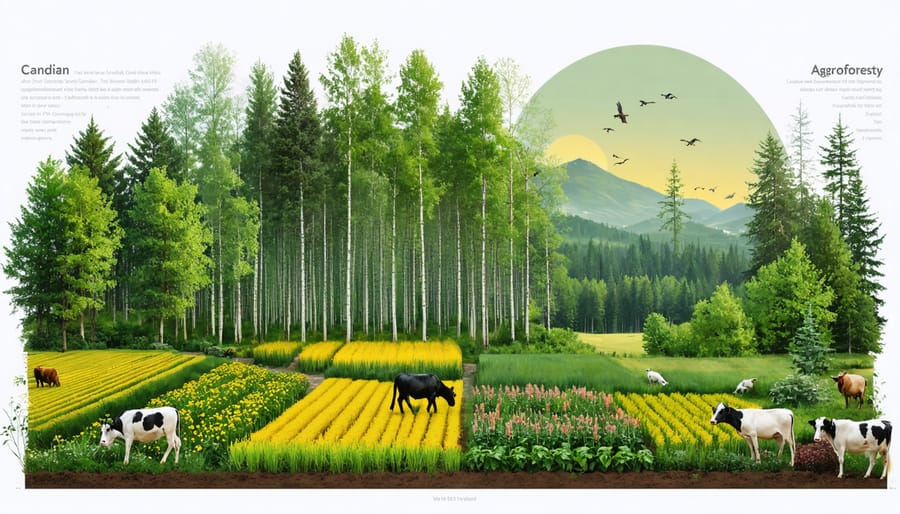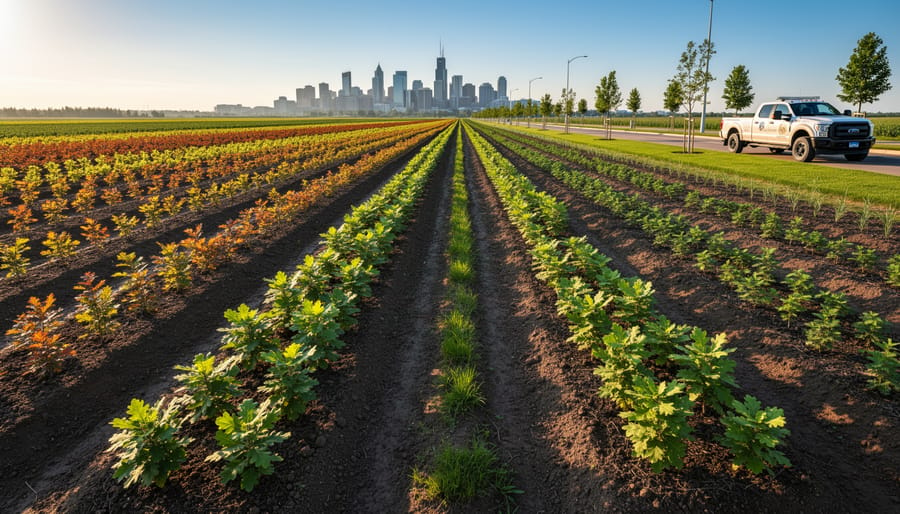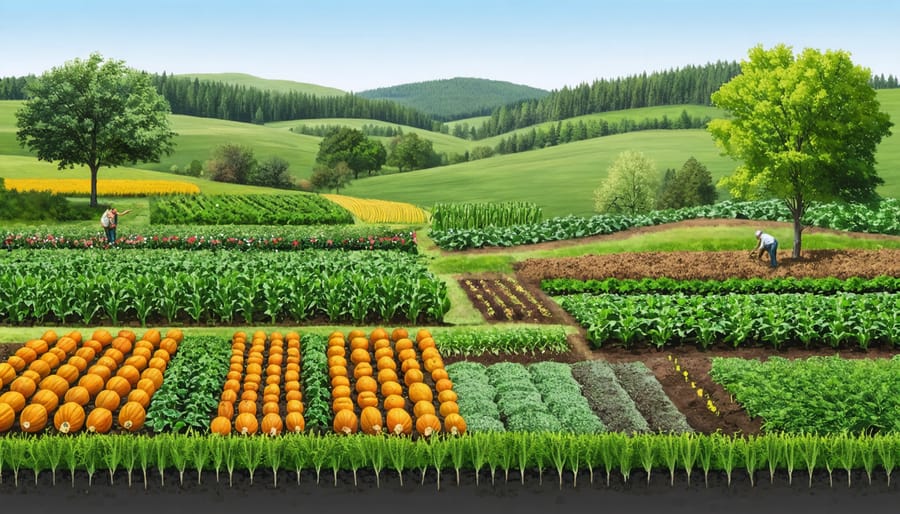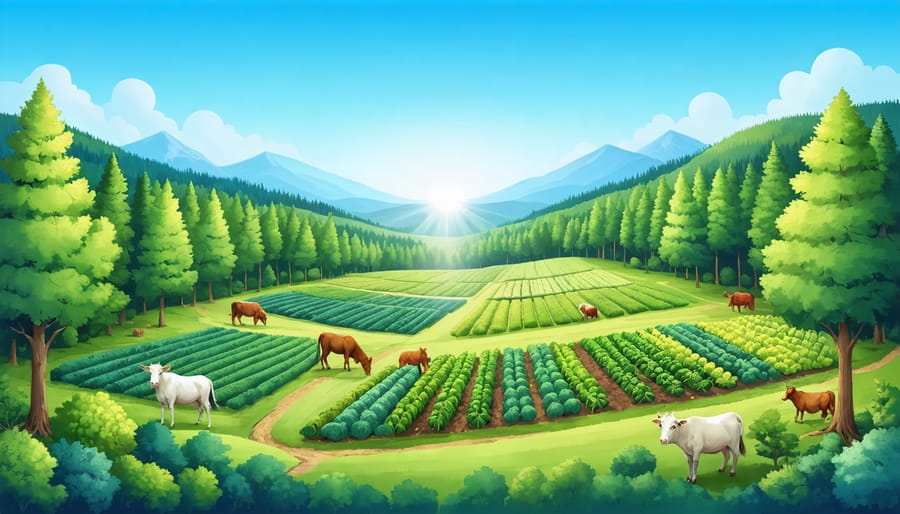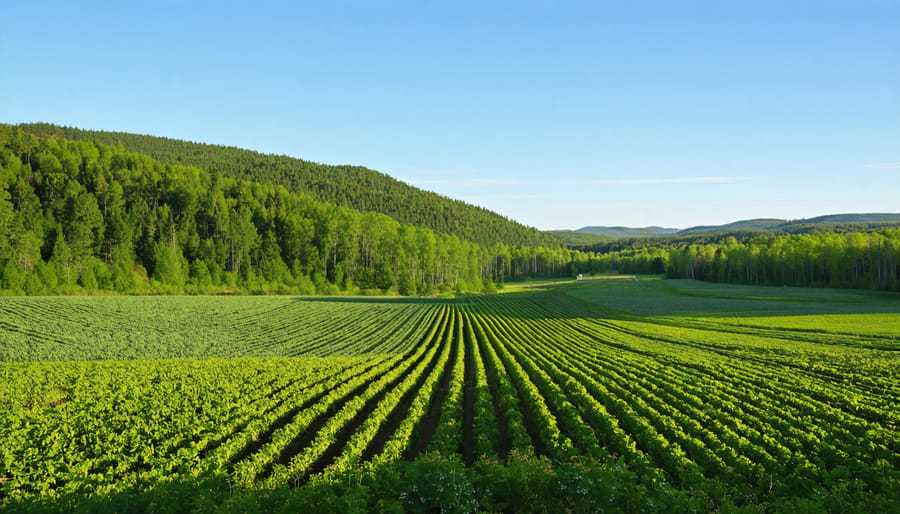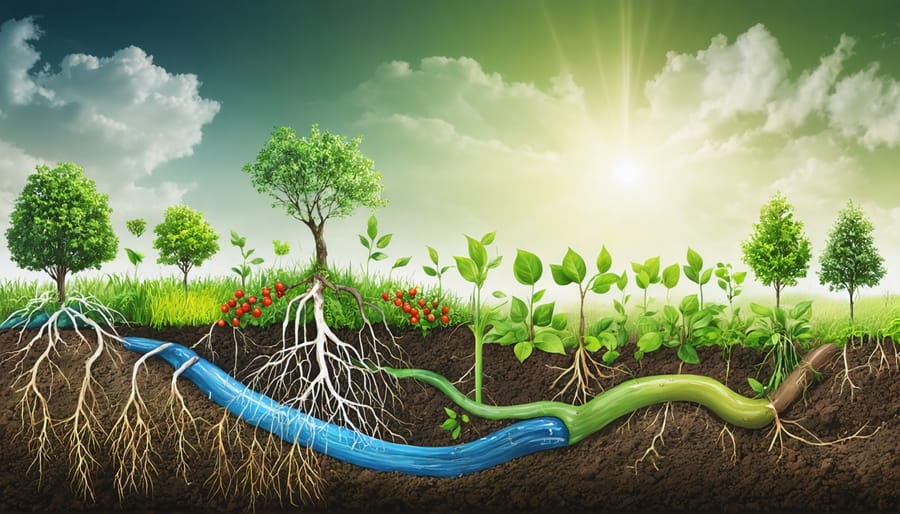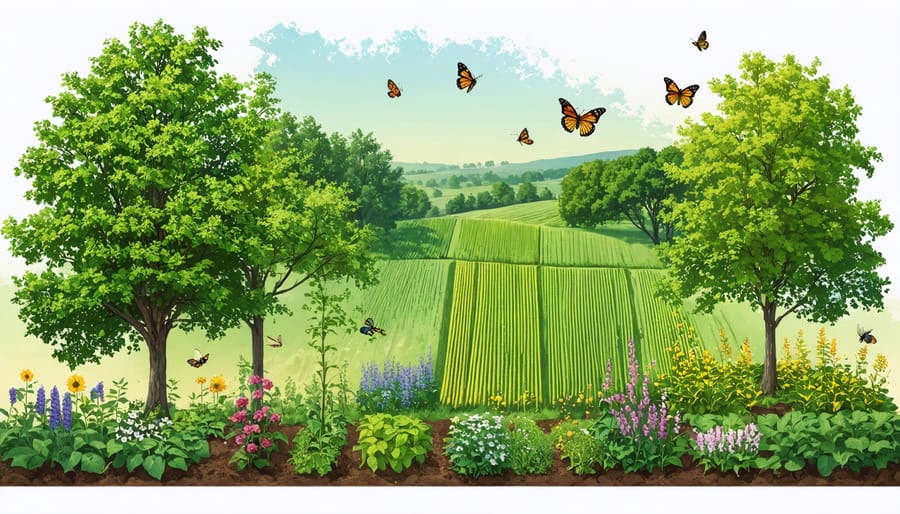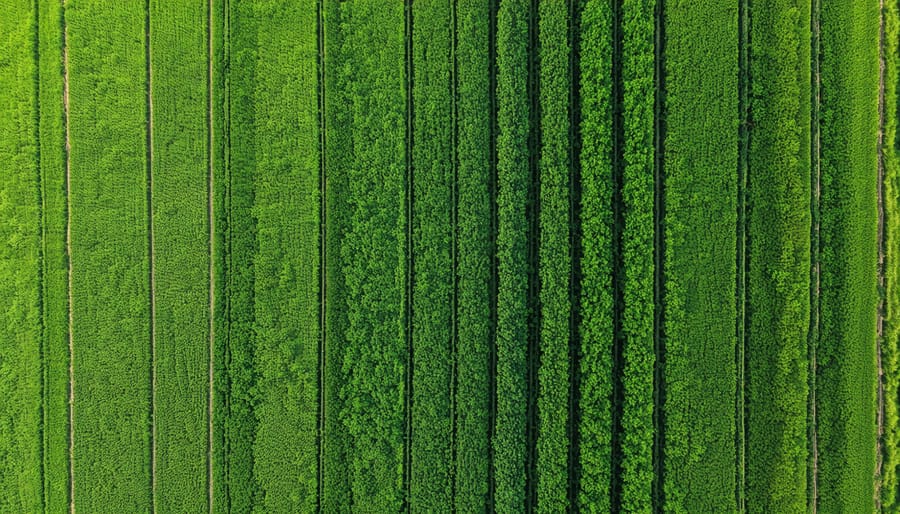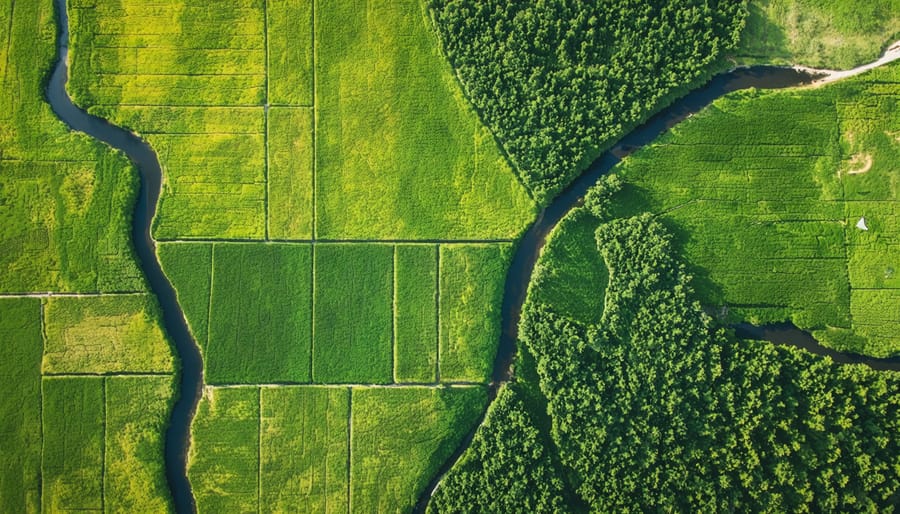Imagine transforming a conventional farm into a thriving ecosystem where trees, crops, and livestock work in harmony. Agroforestry, a revolutionary approach to climate-resilient farming practices, integrates woody perennials with traditional agricultural systems to create sustainable, productive landscapes. Across Alberta’s diverse farmlands, innovative producers are discovering how strategic tree placement can boost crop yields by 20-40% while building soil health and creating new income streams. This time-tested method, practiced by Indigenous communities for generations, combines modern agricultural science with traditional knowledge to address today’s farming challenges. Whether you’re managing a small acreage or a large-scale operation, agroforestry offers practical solutions for enhancing biodiversity, improving water management, and strengthening farm resilience against extreme weather events – all while maintaining or increasing productivity.
What Makes Agroforestry Different from Traditional Farming
The Three-Layer Approach
Agroforestry systems thrive on the principle of vertical integration, where three distinct layers work together to create a robust and productive ecosystem. At the top, trees provide shelter and stability while drawing nutrients from deep within the soil. Common species in Alberta, such as trembling aspen and white spruce, offer excellent windbreaks and create beneficial microclimates for other plants.
The middle layer consists of your primary crops or forage plants. These might include wheat, canola, or other traditional Prairie crops that benefit from the modified environment created by the tree canopy. The trees’ presence helps regulate temperature extremes and reduces moisture loss, particularly important during our dry summer months.
At ground level, cover crops and understory plants complete the system. Species like clover or vetch protect the soil, prevent erosion, and add valuable organic matter. This layer also supports beneficial insects and soil microorganisms essential for healthy soil structure.
When these three layers work in harmony, they create a resilient system that maximizes land use while promoting biodiversity. Many Alberta farmers have found this approach particularly effective in managing the challenges of our variable climate while maintaining productive agricultural operations.
Integration vs. Separation
While conventional mono-cropping separates trees from crops, agroforestry takes an integrated approach by creating diverse farming ecosystems that mirror natural landscapes. Instead of viewing trees as obstacles to farming, agroforestry recognizes them as valuable partners in agricultural production. This integration creates multiple layers of vegetation that work together, much like you’d find in natural woodlands across Alberta. The result is a more resilient system where trees, crops, and sometimes livestock support each other’s growth and productivity. Unlike separated systems where different elements compete for resources, integrated agroforestry maximizes land use by encouraging beneficial relationships between components, leading to improved soil health and increased biodiversity on the farm.

How Agroforestry Builds Healthier Soil
Root Networks and Soil Structure
Tree roots play a vital role in building and maintaining healthy soil structure in agroforestry systems. As roots grow and spread through the soil, they create channels that improve water infiltration and air circulation. These natural pathways become highways for beneficial soil organisms and help prevent soil compaction, a common challenge for Alberta farmers.
Different tree species develop varying root patterns – some create deep taproots that can reach nutrients and moisture several metres below the surface, while others form extensive lateral root networks closer to the surface. This diversity in root architecture helps stabilize soil at multiple depths, reducing erosion and improving overall soil structure.
Root systems also contribute to nutrient cycling through several mechanisms. When fine roots die and decompose, they add organic matter directly to the soil. Tree roots form partnerships with beneficial fungi called mycorrhizae, which help capture and transfer nutrients throughout the soil system. These fungal networks can connect multiple plants, creating what farmers often call the “wood wide web” of nutrient sharing.
In the Canadian prairies, where wind erosion can be a significant concern, tree root systems provide crucial soil anchoring. Local farmers have reported noticeable improvements in soil stability within just a few years of establishing agroforestry systems. The roots also help build soil carbon, contributing to both farm productivity and climate resilience.
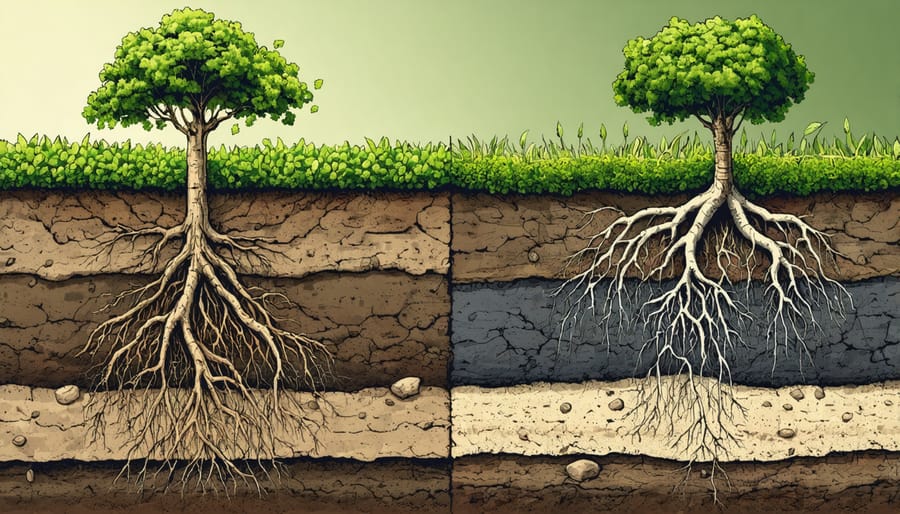
Natural Nutrient Cycling
In agroforestry systems, trees and plants work together to create a natural nutrient cycling process that enriches the soil continuously. When leaves, twigs, and other organic matter fall from trees, they form a protective layer of leaf litter on the forest floor. This natural mulch gradually breaks down, releasing essential nutrients back into the soil.
Here in Alberta, we’ve observed that a mature shelter belt can contribute up to 5 tonnes of leaf litter per hectare annually. This organic matter doesn’t just feed the soil – it creates a complete underground ecosystem. As the material decomposes, it attracts beneficial organisms like earthworms and microscopic bacteria that further enhance soil structure and fertility.
The deep root systems of trees also play a crucial role in this cycle. They tap into nutrients deep within the soil that annual crops can’t reach, bringing these minerals back to the surface through a process we call “nutrient pumping.” When tree leaves fall and decompose, these previously inaccessible nutrients become available to your crops.
Think of it as nature’s own fertilizer factory working year-round. During our harsh Canadian winters, this organic layer provides additional protection to the soil, preventing erosion and maintaining soil moisture. Many Alberta farmers have reported reduced fertilizer needs after establishing agroforestry systems, with some seeing savings of 15-20% on their annual fertilizer costs.
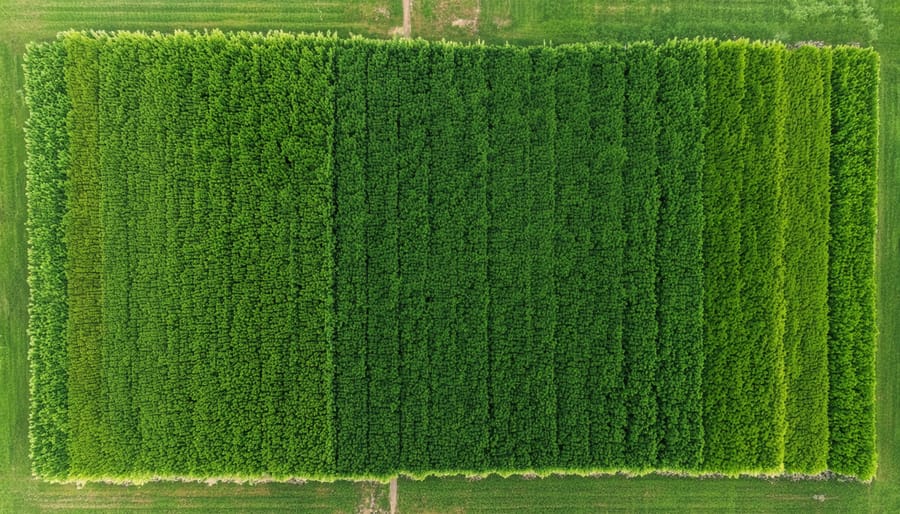
Alberta Success Stories
Alberta’s agricultural landscape is dotted with inspiring examples of successful agroforestry implementations. The Northbank Farm near Peace River stands as a testament to the potential of silvopasture systems, where owner Sarah Mitchell has integrated hybrid poplar windbreaks with rotational grazing paddocks. Since implementing this system in 2015, Mitchell reports a 30% increase in cattle weight gain and significantly reduced winter feed costs due to natural shelter.
In the Lacombe region, the Peterson Family Farm has transformed 40 hectares into a thriving alley cropping operation. By alternating rows of saskatoon berries and hazelnut trees with annual crops, they’ve created multiple income streams while improving soil health. Their soil organic matter has increased from 3% to 5% over eight years, and they’ve noticed increased yields in their wheat crops adjacent to the tree rows.
The Mountain View Forest Farm near Olds showcases the success of forest farming practices. Owner James Thompson cultivates high-value medicinal herbs like goldenseal and ginseng under a managed woodlot of mature spruce and aspen. This operation generates approximately $15,000 per hectare annually from understory crops while maintaining healthy forest cover.
Near Red Deer, the Indigenous-led Eagle Creek Community Farm demonstrates traditional agroforestry knowledge in action. Their food forest system combines traditional Indigenous food plants with modern permaculture techniques, serving as both a productive farm and an educational center for sustainable agriculture practices.
The Woodland Edge Farm near Edmonton has successfully implemented riparian buffers along creek banks, combining willow species for biomass production with native fruiting shrubs. This system has not only prevented soil erosion but also created new revenue streams through willow harvest for bioenergy and wild berry production.
These success stories showcase the diversity and adaptability of agroforestry systems across Alberta’s varied landscapes, proving that with proper planning and management, agroforestry can thrive in our climate while providing multiple environmental and economic benefits.
Getting Started with Agroforestry
Starting your agroforestry journey requires careful planning and a solid understanding of your land’s potential. Begin by assessing your property’s characteristics, including soil type, climate conditions, and existing vegetation. This initial evaluation will help you identify suitable tree species and determine optimal planting locations.
Next, develop a comprehensive design plan that aligns with your farming objectives. Consider factors such as spacing between trees, crop rotation patterns, and implementation considerations specific to your region. Many successful Alberta farmers recommend starting small with a pilot project of 1-2 hectares to gain experience and minimize initial risks.
Connect with local agricultural extension services and experienced agroforesters in your area. Organizations like Agriculture and Agri-Food Canada offer valuable resources and expertise to help you navigate the transition. Consider joining regional farming networks or attending workshops to learn from others’ experiences.
Select tree species that are well-adapted to your local climate and complement your existing agricultural activities. Native species often provide the best results, as they’re naturally suited to local conditions. Popular choices in Alberta include white spruce, green ash, and caragana for windbreaks, while fruit-bearing species like saskatoon berries can add income diversity.
Remember to establish a monitoring system to track your progress and make necessary adjustments. Document changes in soil health, crop yields, and biodiversity to help refine your approach over time. With proper planning and patience, agroforestry can become a sustainable addition to your farming operation.
Agroforestry represents a powerful solution for Canadian farmers seeking to enhance their land’s productivity while contributing to environmental sustainability. By integrating trees and shrubs with crops or livestock, farmers across Alberta and beyond have witnessed remarkable improvements in soil health, biodiversity, and farm resilience. The success stories from local farms demonstrate that agroforestry isn’t just an environmental choice – it’s a smart business decision that can diversify income streams and protect against climate uncertainties. Whether you’re managing a small family farm or overseeing larger agricultural operations, agroforestry offers flexible, scalable solutions that can be tailored to your specific needs and goals. As our agricultural community continues to evolve, embracing agroforestry practices positions Canadian farmers at the forefront of sustainable agriculture while ensuring the long-term viability of our farming heritage for generations to come. Consider taking the first step today by exploring how agroforestry might benefit your operation.

